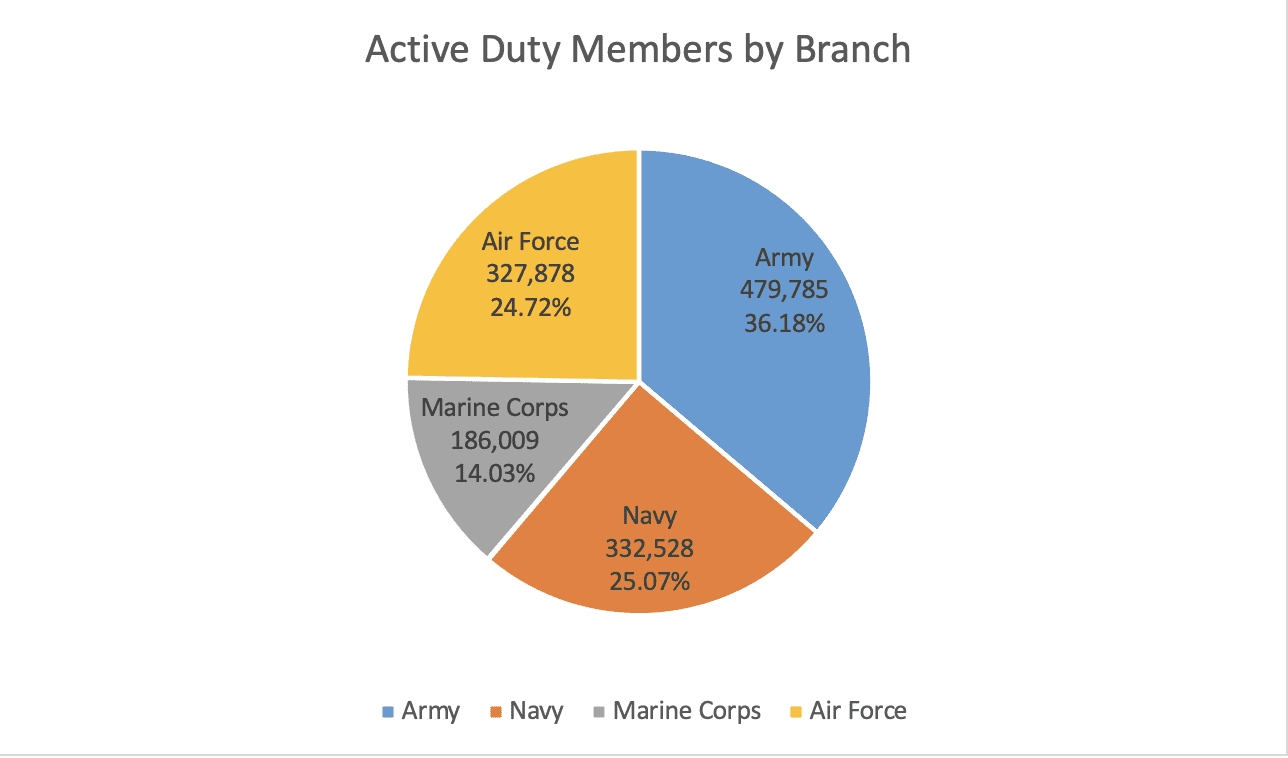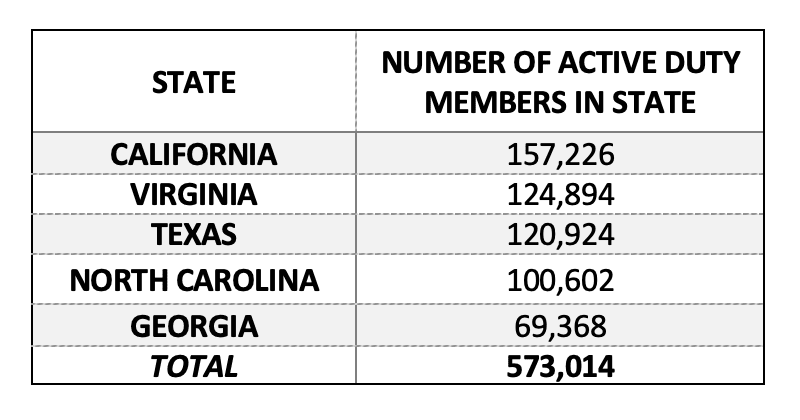By: Lucas Blankenship and Christopher Plein, Ph.D.
We often hear the phrase, “context means everything.” When it comes to working with military families, it is helpful for us to understand the demographic context of the military community. Fortunately, the Department of Defense regularly publishes reports on trends for active duty status in the service branches, the size and composition of families of active duty and reserve members, and their geographic location. The 2019 Demographics Report, published by the U.S. Department of Defense through its Office of the Deputy Assistant Secretary of Defense for Military Community and Family Policy, provides a comprehensive profile of the military family community and is an essential reference source. This blog provides just a few highlights of the report.
One of the big picture takeaways from the report is that the size of the active duty military force has remained stable in recent years, growing by about 25,000 since 2015 (Demographics Report, Chart 2.07, p. 16). As of 2019, active duty personnel totaled approximately 1.33 million, with the Army having the most personnel, followed by the Navy, Air Force, and Marine Corps. The table below provides a quick breakdown.

[Demographics Report Chart 2.03, p. 14]

[Demographics Report Chart 2.37, p. 33]
Military Families
The 2019 Demographics Report also provides helpful information about the numbers and composition of active duty military families. In addition to the approximately 1.33 million active duty members, there are approximately 1.59 million spouses, children, and adult dependents in the military community. Thus, the military family community now totals nearly 3 million individuals. Over half of all active duty personnel (54.5 percent) are married, have children, or adult dependents (Demographics Report, Charts 5.01 and 5.02, p. 127).
The report also provides further information on the demographics of children in military families. Approximately 37 percent of active duty military personnel have children. In all, about 42 percent of children in active duty families are under the age of six (Demographics Report, Charts 5.22 and 5.23, p. 138). Comparing across the service branches, the U.S. Army has the highest percentage of active duty members with children (41.2 percent), while the U.S. Marine Corps has the lowest percentage of active duty members with children (25.0 percent), (Demographics Report Chart 5.25, p. 139).
As time goes on and the Department of Defense force changes, family support and caregiving needs may change as well. Information on shifts in demographics is essential in addressing needs and opportunities in family readiness. This blog has just touched the surface of the wealth of information offered in the 2019 Demographics Report. We encourage you to look further.
As a final note, the Demographics Report also provides information on those who separate from the military. In 2019, these numbers totaled almost 165,000 and includes those who become part of our veteran population. These numbers remind us that the true size of the military community is larger than what the reports so helpfully provide to us. It is a fitting reminder for us on Veterans’ Day.
Reference
United States Department of Defense, Office of the Deputy Assistant Secretary of Defense for Military Community and Family Policy. (2020). 2019 Demographics Profile. Military OneSource. Retrieved from https://download.militaryonesource.mil/12038/MOS/Reports/2019-demographics-report.pdf.














